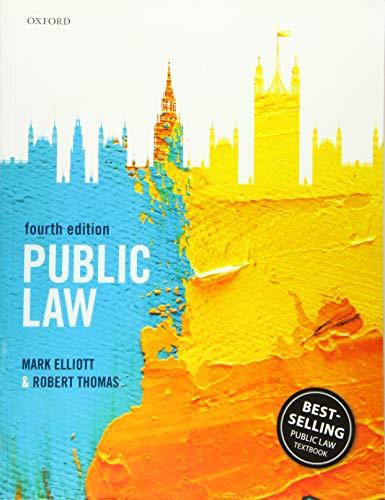Question
Moot problem: In the Supreme Court Agreed facts R v Waitrose Florence Waitrose, aged 8, had been suffering from an inoperable malignant brain tumour for
Moot problem:
In the Supreme Court
Agreed facts
R v Waitrose
Florence Waitrose, aged 8, had been suffering from an inoperable malignant brain tumour for 6 months. Although she was receiving significant amounts of medication to help with her pain, she was still, in the terminal stages of her life, suffering considerably. All other curative treatments had ceased and she was being nursed at home by her parents.
Charles Waitrose, Florence's father, felt that neither he nor his daughter could cope any longer with her pain and suffering, and he suffocated her with a pillow.
Charles Waitrose was charged with murder, and at his trial he pleaded necessity as a defence to the charge. Jumble J. held that, if necessity was recognised as a defence to murder, which in itself was debatable, the approach to its requirements, as set out inA (Children) (Conjoined Twins: Surgical Separation)[2000]4 All ER 961, should be entirely objective. He declined to distinguishA (Children)and consequently adopt the modified objective test propounded by the Supreme Court of Canada inR v Latimer[2001]W.C.B. (2d) 279.
On the question of themens reafor murder, the trial judge concluded that the test of foresight of virtual certainty as adopted inA (Children)was correct, and that a result foreseen as virtually certain is an intended result.
Waitrose was found guilty of murder and unsuccessfully appealed to the Court of Appeal, which agreed with the trial judge on both points.
Waitrose now appeals to the Supreme Court on the following certified grounds:
- 1)Is the defence of necessity available to the offence of murder outside the particular circumstances that arose inA (Children), and, if so, do the three requirements for the defence as set out inA (Children)leave room for the jury to take into account the defendant's reasonable belief, or are they purely objective?
Step by Step Solution
There are 3 Steps involved in it
Step: 1

Get Instant Access to Expert-Tailored Solutions
See step-by-step solutions with expert insights and AI powered tools for academic success
Step: 2

Step: 3

Ace Your Homework with AI
Get the answers you need in no time with our AI-driven, step-by-step assistance
Get Started


